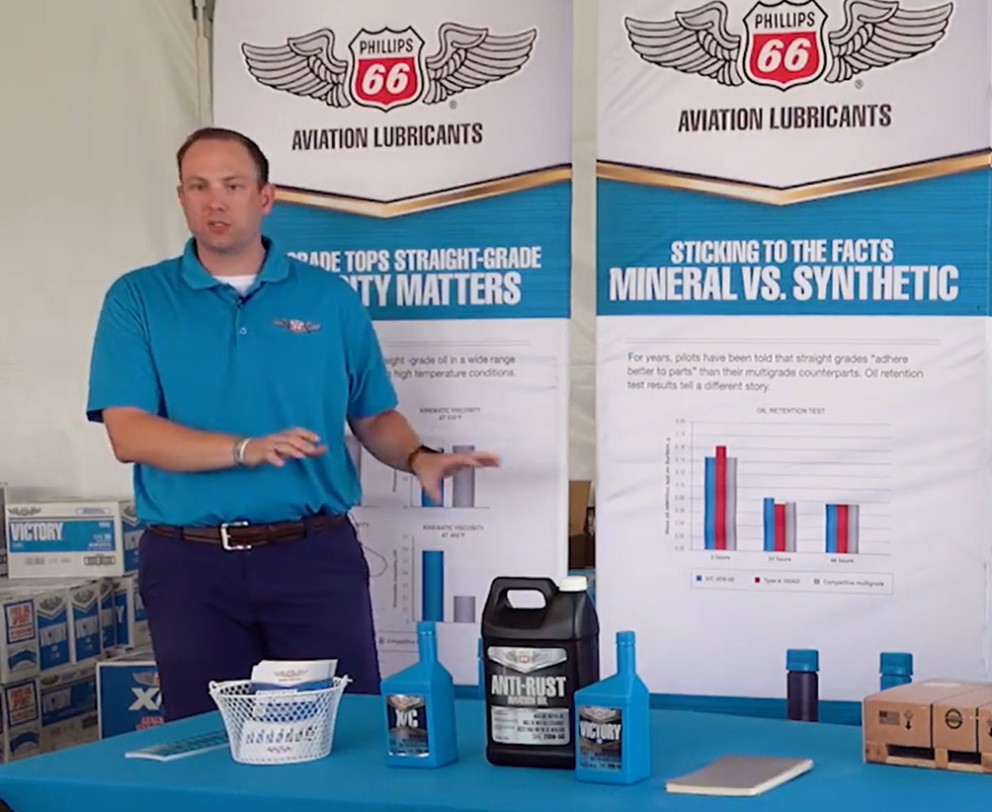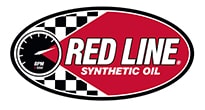Transcript
Speaker 1:
Straight grade versus multi-viscosity in the oil retention that happens on the cylinder walls or other oil-wet surfaces. So this question, we probably answer at least 15 to 20 times a day at any of the air shows. This is a very common question and so what we did is that one of our scientists back in Bartlesville came up with this test and what he did is very simple. Anybody can repeat any of these tests so this is not proprietary in any way.
We took a piece of steel, it’s a little coupon, and we dipped it in oil and then on the other end of the steel we had a string and we attached it to a balance scale. We dipped it in the oil then we went back and looked at different periods of time – 2 hours, 24 hours, 48 hours – all the way up to seven days. What we wanted to look at was how much oil was still on that metal coupon. We made sure there wasn’t anything throwing us off and we repeated this test 3 times, so what you see here is an average of 3 data points.
We did our XC, did our type A and we did a competitive multi-grade oil. Pay attention to the scale here on the y-axis because it’s pretty small. You’re at the second decimal place here – so at 2 hours you can see that the XC maybe has just slightly less oil on that metal coupon and the straight grade has slightly more. The interesting thing is that it’s reversed at 24 hours and then at 48 hours all of it is the same – from 48 hours all the way out to 7 days. As it was all the same value, we didn’t need to report further as it just confuses everybody.
Long story short – it’s all roughly the same whether you run a straight grade or whether you run a multi-viscosity test.
Speaker 2:
Corrosion is our engine’s number one enemy.
In the times the aircraft is sitting, depending on how much and how often you’re flying we always hear you’d rather have an engine with higher time that gets flown on a regular basis than on lower time and it is to prevent and keep that boundary layer consistently flowing on the engine. What that’s trying to showcase is that you don’t have to run the straight weight because the multi weight will give you better protection during those starting periods and running periods. A lot of times the straight weight also comes off the cylinder walls quicker during shutdown.
Speaker 1:
You’ve got to think of it this way too – lubricants do a lot of different things in an engine. In aircraft engines they’re designed to wear and designed to be overhauled over time. As you get higher in time those clearances become larger throughout the engine, specifically around the rings and the cylinder walls so the thicker the oil film that you can have the more sealing effect that you’re going to have on that engine.
So that’s the other aspect of running a multi viscosity in comparison to a straight grade.
Summary
This test compares straight grade versus multi-viscosity oil retention on cylinder walls and other oil-wet surfaces. It involves dipping a piece of steel in oil and attaching it to a balance scale. The results in a time-based test showed that XC has slightly less oil on the metal coupon and the straight grade has slightly more.
The multi-viscosity gives better protection during starting periods and running periods, and the straight weight comes off the cylinder walls quicker during shutdown. Additionally, lubricants provide different benefits in an engine, and as the engine runs for a longer period of time, it is best to have a thicker oil film to ensure that you have a more sealing effect.






